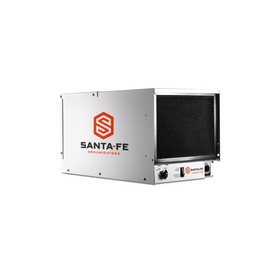
A Passive Pop Up House
Last Updated: Feb 19, 2025Manuel Mamane co-owns Bien Loin D´ici, a sublime bed and breakfast, and spa in Nimes, a French village otherwise known as “Little Roma” for its proximity to several Roman ruins. Located in Provence, Bien Loin D´ici includes Mamane’s home and the three guest lodges he rents to tourists. Based in Rousset, France, the Pop Up House Company has developed a unique building technique. This technique helps homeowners achieve the exceptional energy efficiency associated with the passive house standard.
Table of Contents
- The Pop Up Concept
- Bien Loin D'ici
- Pop Up Passive Results
- The Wonders of Wood

The Pop Up House began when designer Corentin Thiercelin sought to answer a simple question: “Why build a frame and insulate it later when you can build an already insulated frame?” Thiercelin responded to the question in 2012 with an office prototype he designed and built in Marseille. The prototype was constructed using insulation blocks separated by wooden boards or OSB (oriented strand board) panels.
He followed that up the following year with another office, this time in Aix-en-Provence. A patent was issued, and a video showing the construction system was released.
Mamane watched the video and was intrigued.
The Pop Up Concept
The Pop Up House concept set out to create homes with high thermal performance to simplify the construction of energy-efficient homes. The homes are built entirely from 12-inch insulated blocks made from graphite expanded polystyrene, separated by wooden boards. This allows the structure to have a low thermal transmission coefficient “U” compared to traditionally framed and insulated homes.

The Pop Up House model can achieve higher energy efficiency performance than the criteria set by the PASSIVHAUS® label (the European and original version of Passive House). In a passive home, energy efficiency and thermal comfort are attained through passive measures (instead of increased reliance on mechanical heating and cooling). These measures include high levels of insulation with minimal thermal bridges, airtight building envelopes, optimum indoor air quality, passive solar heat gain, and internal heat sources.
According to the International Passive House Association, "a Passive House requires as little as 10 percent of the energy used by typical central European buildings—meaning an energy savings of up to 90 percent! As energy savings equal emissions reductions, the Passive House is a sustainable alternative to conventional construction." By making the floors, walls, and ceilings from the same polystyrene material, thermal bridges are limited, and the building envelope is airtight. These are essential elements of passive house principles.
Polystyrene may not be considered the "greenest" or most natural building material. However, the Pop Up House website states, "this type of polystyrene is composed of 98% air. The remaining 2% comes from the upcycling of a product derived from oil refining: naphtha. Since it is unusable as fuel, it would become waste if it wasn't used to make polystyrene."
Bien Loin D'ici
Mamane's home and guest lodges were custom designed with the Pop Up House team to include a wood structure that functions as a passive and bioclimatic house. An array of 30 solar photovoltaic panels (PV) produces renewable energy for Mamane and his guests and powers an electric vehicle charging station. Air-to-air and air-to-water heat pumps exclusively provide heating and cooling for the home and the lodges. The on-site wastewater treatment plant is entirely natural and relies on a plant treatment of all wastewater.

Mamane´s 1,400-square-foot home and three guest lodges (320 square feet, each) are a beautiful example of energy-efficient, biophilic architecture. The structures have large windows that open up to a xeriscaping garden that showcases the botanical biodiversity of the dry scrubland of the Mediterranean climate. The garden is entirely enclosed with dry-stone walls and includes a chlorine-free, over-flow swimming pool that is 65 feet long.

"I also built wood terraces for each of the lodges plus the pool (and included infrastructure) for a total of 200 square meters (2,150 square feet) of living space," Mamane says. His favorite part of his home is that "the main room includes the kitchen and the living room, which has a design chimney and wide windows that open up to the terrace and the garden areas."
Pop Up Passive Results
The Passivhaus Standard originated in the late 1980s as the brainchild of Wolfgang Feist of the Institute for Housing and the Environment in Darmstadt, Germany. Today, the Passivhaus standard (passive house, in English) has expanded across Europe, with over 20,000 homes earning passive house certification in Germany alone.
As the energy savings of the passive house standard become more evident, local governments are beginning to invest in passive house infrastructure. In the Swedish town of Växjö, two city-funded high-rise apartment complexes have recently been built following passive house principles. This project has drastically lowered the energy costs for homeowners in the city and is also helping the city move towards the short-term goal of reducing CO2 levels by 70 percent by 2025.
The passive house standards have been deployed to Provence, with Bien Loin D'ici as a prime example. "The high-quality insulation is particularly efficient with the Pop Up House concept," says Mamane. "Also, the orientation of our home allows us to take advantage of the sun during the winter to warm up the house." The structures also integrate a smart use of energy through heat pumps, LED lighting, phyto-depuration water treatment, and 30 photovoltaic solar panels on the roof to produce 9 kW [kilowatts] of free electricity."
Mamane says that it is difficult to compare energy use to other Pop Up structures, "as we have a huge consumption of energy (with our Airbnb and spa business) due to the luxury equipment used by the spa, the sauna, the large pool, and other appliances and comforts in the guest houses. But when we are closed for the winter, our home needs four times less energy than my mother's 130-square-meter (1,400-square-foot) flat in town. Our energy bills are zero in winter, thanks to the solar panels."
The Wonders of Wood
Mamane addresses qualms other homeowners may have about building and living in a wood home. "People tend to have concerns about the durability of wood homes," he says. "My wood home is only four years old, of course, but some wood houses are many centuries old, proving their durability. Another concern is the price because (in Europe) wood homes aren't cheaper than a concrete house, but you'll save money in the long term."
He adds that "Beyond the obvious environmental and financial benefits and advantages, the kind of wooden house we have is a pleasant place to live because of the nice smell and the constant, optimum humidity levels. We have absolutely no excess humidity or smell of decaying wood." Moreover, the construction of the Pop Up preassembled structures was efficient. "It's easy and fast from a homeowner's point of view," he says. "It took a total of only two weeks with four full-time workers to build the entire structure of our home."
Mamane says, looking back, that he wouldn't have gone any other route with the design and construction of his own home and Bien Loin D'ici. "We took time to think about the project, and we've made no mistakes," he says. As for other homeowners contemplating passive house construction and a Pop-Up home, he has this advice:
"It is important to think holistically before you start. The orientation of your home in relation to the sun, the kind of energy devices you will use, the possibility of installing solar energy, and your water treatment options: all of these need to be considered. Choosing to upgrade to a more sustainable and energy-efficient home gives you more comfort and economic savings, and also the feeling that you did it right for sustainability purposes."
Tobias Roberts
Tobias runs an agroecology farm and a natural building collective in the mountains of El Salvador. He specializes in earthen construction methods and uses permaculture design methods to integrate structures into the sustainability of the landscape.










